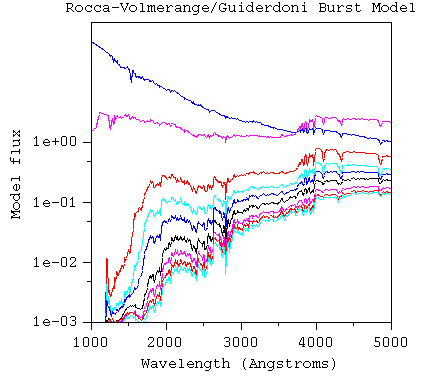Krell1956 wrote:I would like to know more detail about the UV data and what it's adding to the Ultra Deep Field image. The APOD post says the UV data helped study star formation in galaxies 5 to 10 billion LY away. I haven't done the math on it, but I would think that even energetic gamma rays associated with star formation (if they ARE associated with star formation- doesn't seem energetic enough) would have red shifted to longer wavelengths than UV. Is there something I'm not reading right? Energetic black holes and star formation....?
The hallmark of star-forming regions (as long as they're not too dust-enshrouded) is intense radiation in the emitted UV part of the spectrum, so strongly that images are more and more sensitive to the level of star formation at shorter UV wavelengths until one reaches the Lyman limit where radiation has enough energy to ionize hydrogen (912 Angstroms, 91.2 nm, 13.6 eV photon energy). So UV data improve our census of cosmic star formation up to redshifts where the filter samples the "missing" radiation absorbed by gas in each galaxy. The new data use several near-UV filters down to 2250 A wavelength, so they show star formation to a redshift (2250-912)/912=1.46 (with a soft cutoff because of the width of the filter transmission). That would be a lookback time of about 9 Gyr.
To show how sensitive the UV is to recent star formation, this plot compares the spectra of bursts of star formation at billion-year intervals (top to bottom). The intensity scale is logarithmic, stressing how fast the population of stars both fades and reddens with time. (Taken from
this class page)

One reason these data were taken now is that the sensitivity of the UV instruments on Hubble is declining noticeably year to year (which pretty much all UV detectors do in space, due to damage from particle impacts and accumulating contaminants if anything else in the system outgases), so for the last couple of years Hubble has been scheduled under a "UV Initiative", giving extra weight to UV observations while they're still easy.
 Hubble Ultra Deep Field 2014
Hubble Ultra Deep Field 2014

